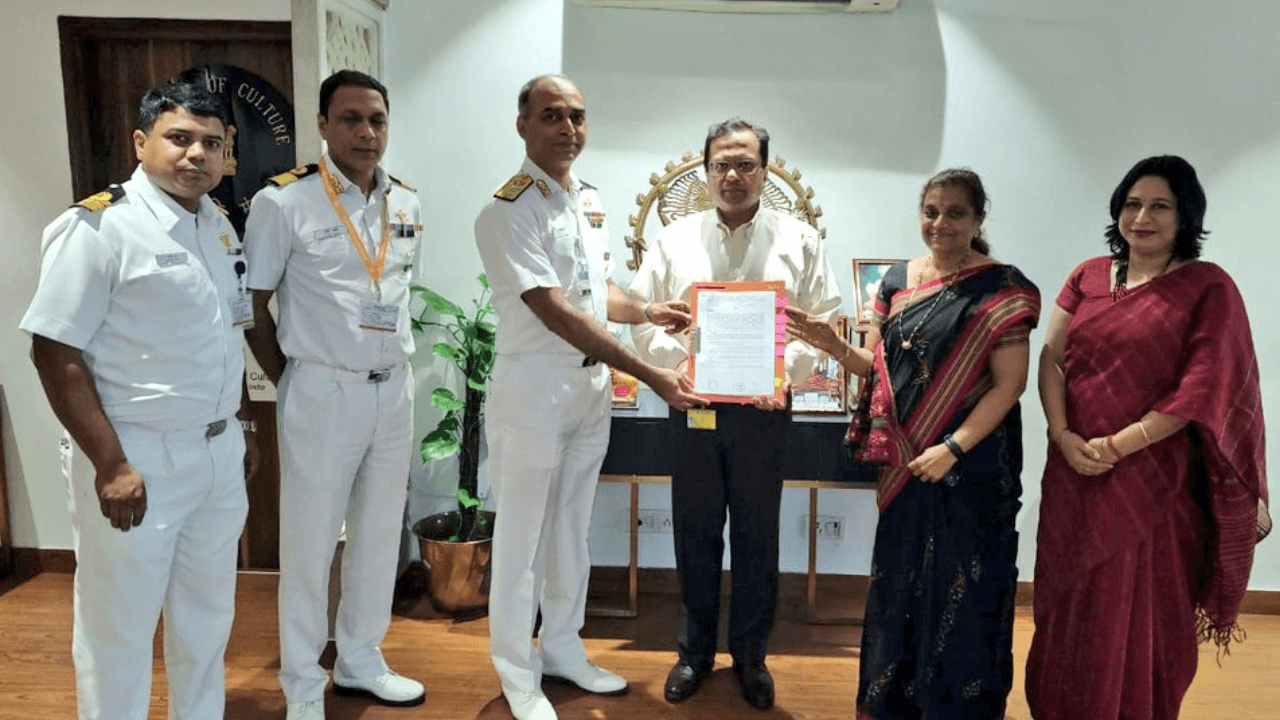The Ministry of Culture and the Indian Navy have taken a significant step to revive and preserve the ancient and traditional technique of shipbuilding known as the ‘stitched shipbuilding method or Tankai Method.’ To facilitate this initiative, they have signed a Memorandum of Understanding (MoU). This collaboration aims to safeguard and promote the 2000-year-old heritage of shipbuilding, contributing to the preservation of India’s rich maritime history and knowledge.
With the Indian Navy taking charge of the project, they will oversee every aspect of its implementation and execution. As experts in maritime affairs, their involvement guarantees smooth project management and adherence to stringent safety and precision standards. Their extensive experience and technical expertise will be instrumental in the successful revival of the ancient stitching method and the construction of the stitched ship, preserving this remarkable traditional shipbuilding technique for future generations to appreciate and learn from.
What is Ancient Stitched Shipbuilding Method called Tankai Method?
The ancient stitched shipbuilding method, also known as the Tankai method, is a traditional shipbuilding technique that has been used in India for centuries. It involves stitching wooden planks together to construct ships, rather than using nails. This method offers flexibility and durability to the ships, making them less susceptible to damage from shoals and sandbars.
The Tankai method is believed to have originated in the Indus Valley Civilization around 3000 BCE. It was used by the ancient Egyptians, Greeks, and Romans, and it is still used today in some parts of India.
Advantages of the Tankai Method
- The ships are very flexible and durable, making them less susceptible to damage from shoals and sandbars.
- The ships are easy to repair, as the planks can be easily removed and replaced.
- The ships are relatively inexpensive to build, as they do not require nails or other metal fittings.
Disadvantages of the Tankai Method
- The ships are not as seaworthy as ships built with nails or other metal fittings.
- The ships are more time-consuming to build.
- The ships are not as aesthetically pleasing as ships built with nails or other metal fittings.
Overall, the Tankai method is a versatile and durable shipbuilding technique that has been used for centuries. It is a valuable part of India’s maritime heritage, and it is still used today by some traditional boat builders.
Significance of the MoU
The revival of the stitched ship method is of immense cultural importance in India, as it reflects the country’s rich maritime heritage and traditional craftsmanship. These ships have played a significant role in India’s history, enabling trade, exploration, and cultural exchange.
- By undertaking this ambitious project, India aims to preserve and showcase its cultural heritage for future generations.
- The plan to construct an ocean-going wooden stitched sailship using ancient techniques highlights the expertise of traditional shipwrights and their exceptional craftsmanship.
- This initiative also seeks to reconnect with historical maritime routes and navigational methods, shedding light on past interactions across the Indian Ocean and facilitating cultural exchanges.
- Beyond the physical construction, the project carries symbolic value in promoting a sense of pride in India’s maritime legacy among its citizens.
- It also fosters cultural connections with other Indian Ocean countries.
- The comprehensive documentation of the project ensures that valuable knowledge is preserved for posterity.
Overall, the stitched ship project serves as a testament to India’s diverse cultural heritage and its significant contributions to the world of seafaring.
- 3 August Current Affairs 2023 in English
- MoU Between Subroto Mukerjee Sports and Education Society and All India Football Federation (AIFF) to Promote Football at Grassroot Level
- Dr. Mansukh Mandaviya Delivers Keynote Address at the 13th Indian Organ Donation Day ceremony
- Education Ministry Forms Expert Panel on Anti-Discrimination in Higher Education
- Concerns Arise Over Cheetah Deaths at Kuno National Park
